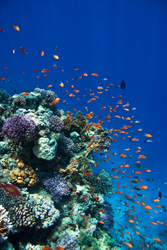Corals reveal secrets of ocean carbon-cycling
The amount of carbon dioxide (CO2) in the atmosphere varied long before mankind arrived on the scene. It is well known that the oceans play an important role in the uptake and cycling of carbon. It is thought that oceans may exhale large amounts of stored CO2 when the conditions are right, while at other times they may inhale it and store it in deep reservoirs. This theory is being put to the test using sediment cores from the Atlantic Ocean. Unfortunately, this technique doesn't work everywhere, but a new approach using corals found deep in the Southern Ocean is being developed with the aid of EU funding. The project is called 'Using deep-sea corals to test the role of the deep Southern Ocean in ocean circulation and the regulation of atmospheric carbon dioxide' (DeepoceanglacialCO2). Coral samples were collected during a research cruise in the Southern Ocean and dated using special radioisotopes. Measurements of the coral's growth rate at different times in the past have provided feedback regarding the amount of CO2 in the seawater. This enabled the research team to construct a time series of dissolved CO2. In addition, information about the origin of the seawater has been obtained that sheds light on aspects of global ocean circulation. The new methodology shows promise and work is already underway to further refine it. Unlocking the secrets of how the oceans regulated atmospheric CO2 concentrations in the past will help scientists better understand what will happen in the future as anthropogenic emissions complicate the picture.



